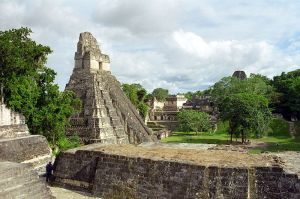
The well-known societal collapse of the ancient Maya civilization in the southern Maya lowlands during the Terminal Classic Period (about 800 – 950 CE) was more pronounced than in the northern lowlands, at least in part because of more severe drought conditions in the southern region, suggest researchers in a report published in the Proceedings of the National Academy of Sciences.
“We conducted a new analysis of regional drought intensity that shows drought was most severe in the region with the strongest societal collapse,” concluded Peter M.J. Douglas of Yale University and a team of colleagues from five other institutions.*
Data has been comparatively robust for the northern lowlands, showing a clear correlation between the Maya societal decline in that region and changing climate conditions, specifically the development of drought conditions affecting agricultural production. Less robust has been the correlating data for the southern lowlands, precipitating an ongoing scholarly debate about the various causes for the collapse in that region, where it is recorded to have been even more severe than in the north.
To reach their conclusions, Douglas and colleagues conducted stable hydrogen and carbon isotope analyses of plant wax lipids in sediment cores taken from Lakes Chichancanab and Salpeten, in the northern and southern Maya Lowlands, respectively.
What they found was that the southern lowlands experienced more intense drying than the northern lowlands in the period leading to the Maya collapse, consistent with archaeological evidence of earlier and more persistent societal decline in the south.
________________________________________
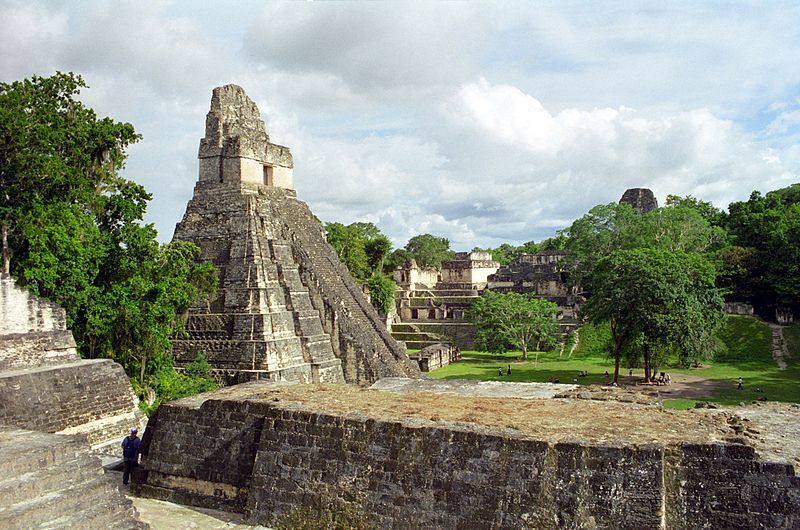 A view of the ancient Maya center of Tikal, one of the most thoroughly researched and best understood Maya cities. Along with many of the other great Maya centers, Tikal experienced the great societal decline/collapse during the Terminal Classic Period. Wikimedia Commons
A view of the ancient Maya center of Tikal, one of the most thoroughly researched and best understood Maya cities. Along with many of the other great Maya centers, Tikal experienced the great societal decline/collapse during the Terminal Classic Period. Wikimedia Commons
________________________________________
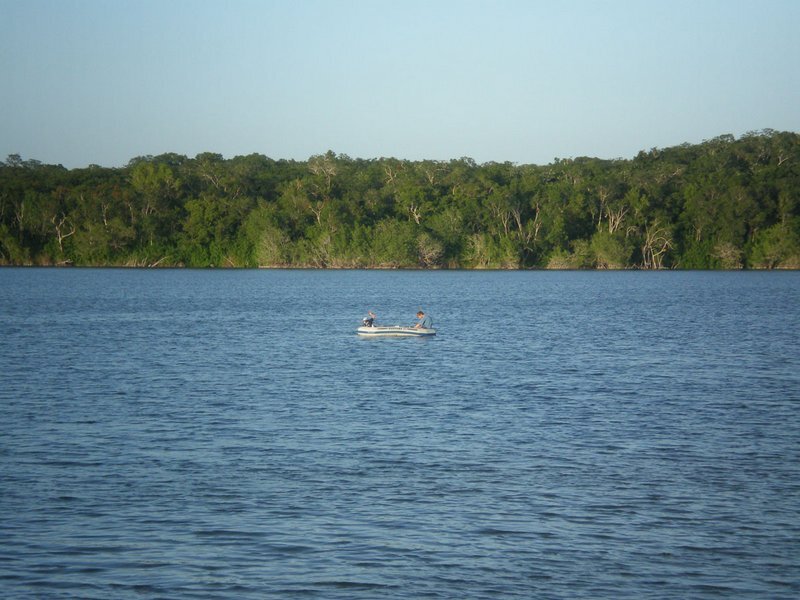 Researchers collecting sediments from Lake Chichancanab, Mexico. Image courtesy of Mark Brenner, University of Florida.
Researchers collecting sediments from Lake Chichancanab, Mexico. Image courtesy of Mark Brenner, University of Florida.
_________________________________________
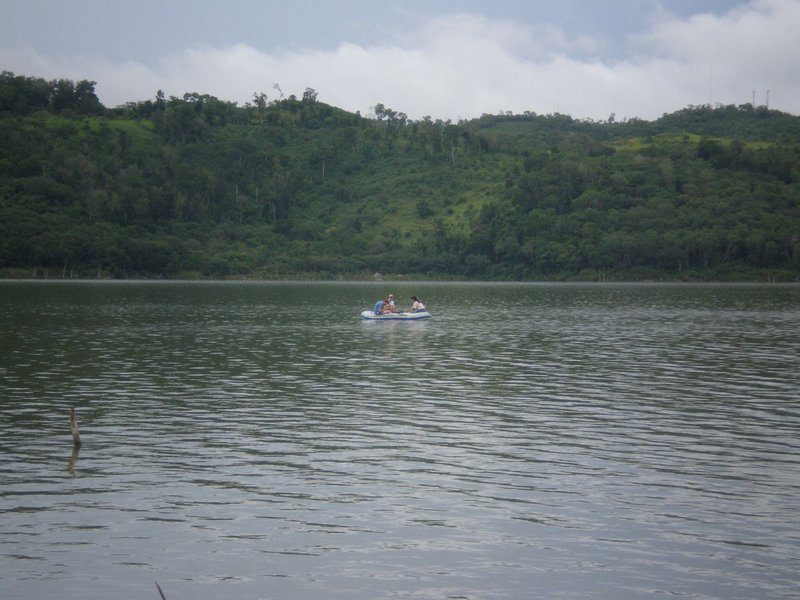 Researchers collecting sediments from Lake Salpeten, Guatemala.Image courtesy of Mark Brenner, University of Florida
Researchers collecting sediments from Lake Salpeten, Guatemala.Image courtesy of Mark Brenner, University of Florida
_______________________________________
In addition, the researchers identified a previous period of substantial drying in the southern lowlands from around 200 to 500 CE (during the Early Classic Period), coinciding with agricultural intensification.
“Drying during the Early Classic period is associated with the decline and abandonment of some of the largest Late Preclassic political systems in the third century C.E. and subsequent political fragmentation in the region,” the authors wrote in their report. “During that time, widespread political realignment developed gradually under the strong influence of a foreign power, the central Mexican city of Teotihuacán. We suggest that climatological stress disrupted the largest Late Preclassic states, enabling smaller and more resilient polities to grow by using adaptations to more variable conditions, such as water conservation.”*
In sum, the researchers’ findings suggest that the Maya successfully adapted to early periods of drying but eventually failed as droughts became increasingly severe, in both the north and the south, but more dramatically and earlier in the south.
_________________________________________________
*Peter M. J. Douglas, et al., “Drought, agricultural adaptation, and sociopolitical collapse in the Maya Lowlands,” Proceedings of the National Academy of Sciences, www.pnas.org/cgi/doi/10.1073/pnas.1419133112
Some material adapted and edited from the subject PNAS press release.
_________________________________________________
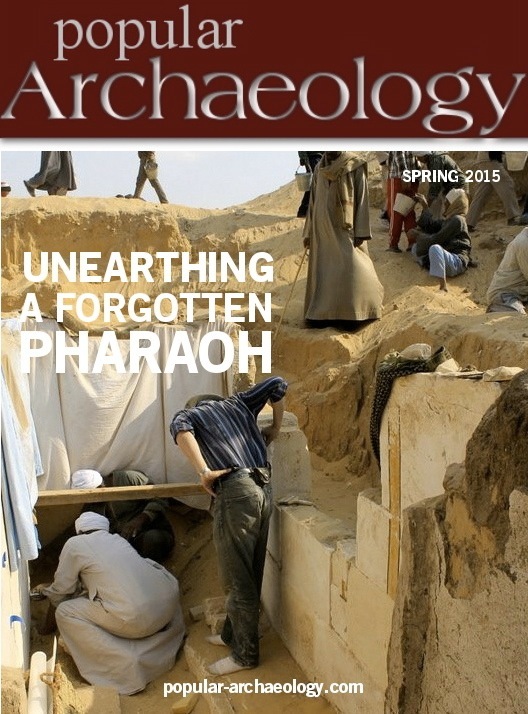 You can read our more in-depth articles about new discoveries and developments in archaeology and anthropology with a premium subscription to Popular Archaeology Magazine. Find out what Popular Archaeology Magazine is all about.
You can read our more in-depth articles about new discoveries and developments in archaeology and anthropology with a premium subscription to Popular Archaeology Magazine. Find out what Popular Archaeology Magazine is all about.
In addition, the latest Popular Archaeology ebook is now available.
______________________________________________
Travel and learn with Far Horizons.
____________________________________________
 Popular Archaeology’s annual Discovery Edition eBook is a selection of the best stories published in Popular Archaeology Magazine in past issues, with an emphasis on some of the most significant, groundbreaking, or fascinating discoveries in the fields of archaeology and paleoanthropology and related fields. At least some of the articles have been updated or revised specifically for the Discovery edition. We can confidently say that there is no other single issue of an archaeology-related magazine, paper print or online, that contains as much major feature article content as this one. The latest issue, volume 2, has just been released. Go to the Discovery edition page for more information.
Popular Archaeology’s annual Discovery Edition eBook is a selection of the best stories published in Popular Archaeology Magazine in past issues, with an emphasis on some of the most significant, groundbreaking, or fascinating discoveries in the fields of archaeology and paleoanthropology and related fields. At least some of the articles have been updated or revised specifically for the Discovery edition. We can confidently say that there is no other single issue of an archaeology-related magazine, paper print or online, that contains as much major feature article content as this one. The latest issue, volume 2, has just been released. Go to the Discovery edition page for more information.






